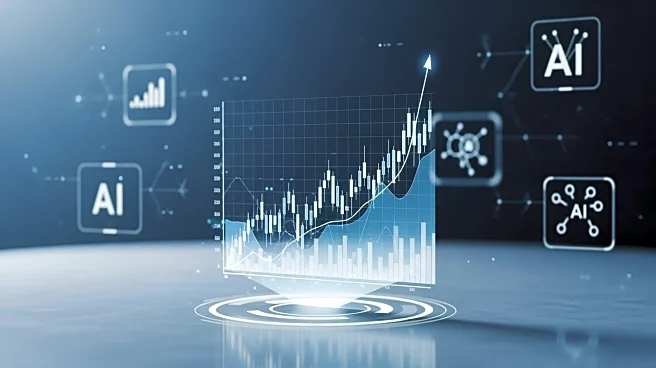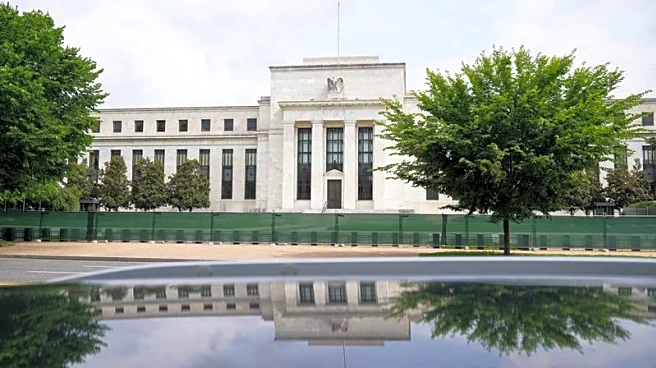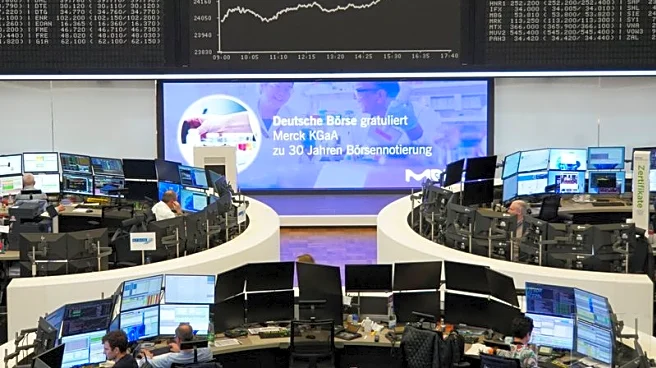What's Happening?
Goldman Sachs has issued a warning that the current optimistic GDP projections for the U.S. economy may be overly positive due to a stagnant jobs market. According to Jan Hatzius, Goldman’s chief U.S. economist, GDP estimates have risen sharply during
the government shutdown, with Q2 tracking at 3.8% and Q3 at 3.3%. The Federal Reserve Bank of Atlanta even suggested that Q3 GDP could reach as high as 3.9%. Despite these figures, Hatzius cautions that employment data could dampen this outlook. Surveys indicate that the labor market is experiencing stagnation, with indicators such as the labor market tightness tracker showing a decline to 2016 levels. This downturn is attributed to changing business behaviors in response to President Trump’s tariff plans, which led to a spike in U.S. import volumes earlier in the year.
Why It's Important?
The potential disconnect between GDP growth and employment figures is significant as it could impact economic policy and business strategies. If the jobs market remains stagnant, it may lead to reduced consumer spending and slower economic growth, despite positive GDP numbers. This situation could influence the Federal Reserve's decisions on interest rates, potentially leading to further rate cuts. Additionally, the employment challenges faced by younger workers, particularly in tech-related fields, highlight the broader implications of technological advancements like artificial intelligence on the labor market. Businesses and policymakers may need to address these issues to ensure sustainable economic growth.
What's Next?
The Federal Reserve is expected to cut interest rates at least once more before the end of the year, which could provide some economic stimulus. However, the ongoing challenges in the labor market may require additional measures to support job growth. Businesses may need to adapt to the changing economic landscape, particularly in light of technological advancements and shifting trade policies. Policymakers might also consider initiatives to enhance workforce skills, especially in technology, to improve employment prospects for younger workers.
Beyond the Headlines
The rise of artificial intelligence and its impact on employment is a critical issue that could reshape the labor market. As AI becomes more prevalent, there may be a decline in demand for certain job categories, particularly those involving routine cognitive tasks. This shift could necessitate a reevaluation of education and training programs to better align with the evolving job market. Additionally, the interplay between trade policies and business strategies underscores the complexity of global economic dynamics, which could have long-term implications for U.S. economic stability.














